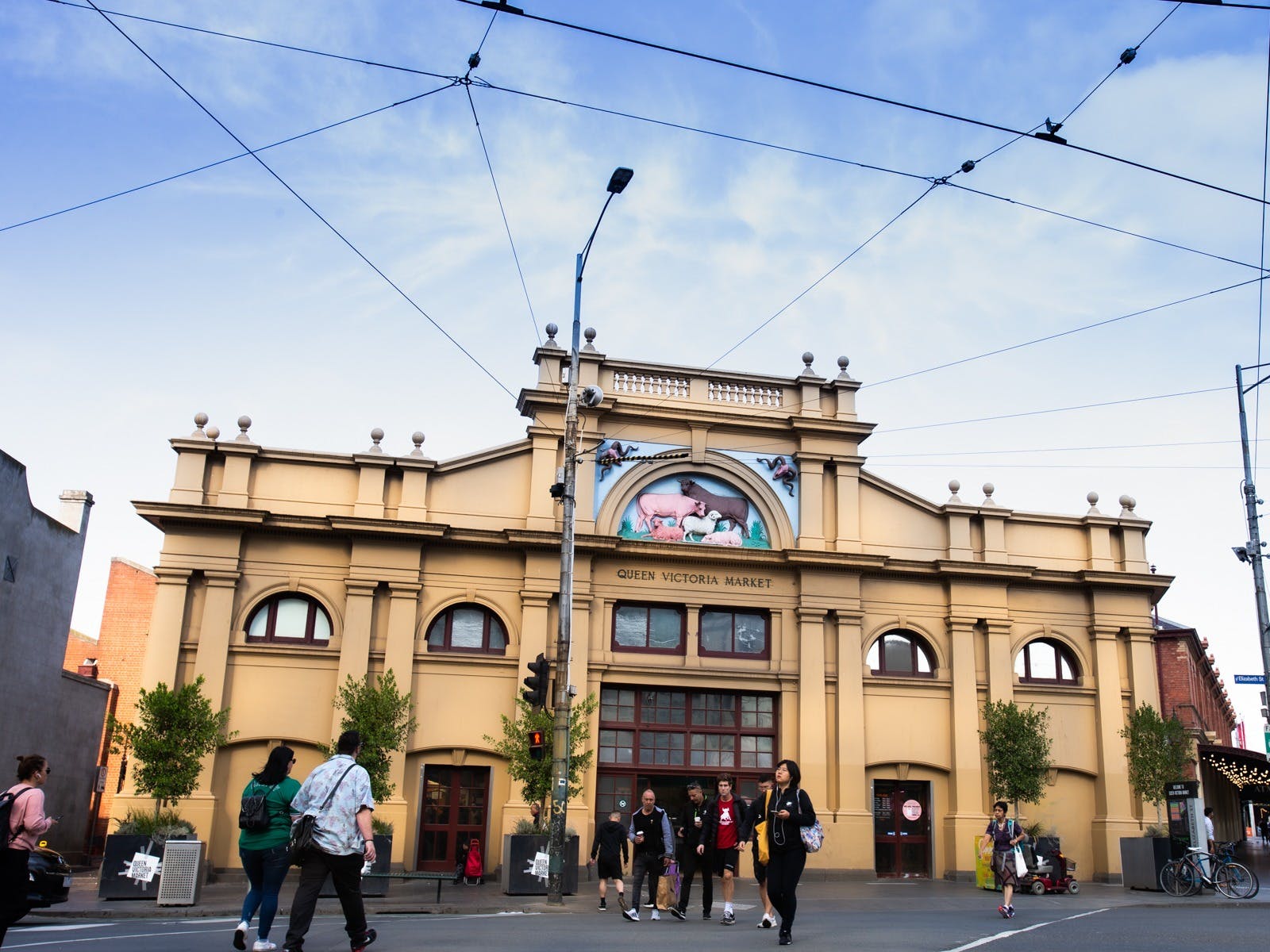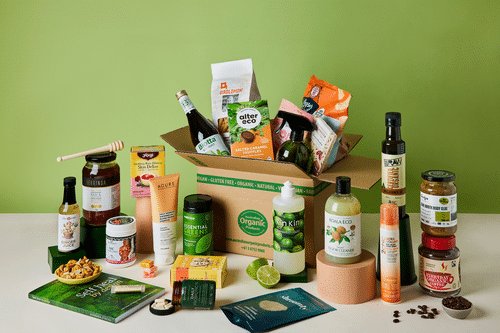Melbourne’s Queen Victoria Market is more than just a shopping destination—it’s a vibrant tapestry of Melbourne’s culture, history, and community spirit. Spanning over seven hectares in the heart of the city, this historic open-air market has served generations of Melburnians and continues to attract over 10 million visitors annually. Whether you’re drawn by its colorful produce halls, rich migrant history, or the scent of freshly baked bread wafting through the Deli Hall, the market offers an unforgettable experience that blends the past with the present. The City of Melbourne recognizes it as one of the most iconic and beloved places in Victoria.
Established in 1878 on the former site of Melbourne’s first cemetery, Melbourne’s Queen Victoria Market has been a symbol of resilience and regeneration. Its original sheds and historical Meat Hall stand proudly to this day, retaining the authentic charm of 19th-century architecture. According to Heritage Victoria, the market is protected under state heritage laws, ensuring that redevelopment efforts honor its cultural significance. Guided tours by Queen Victoria Market Tours provide fascinating insights into the stories of traders, immigrants, and city dwellers who helped shape its legacy.
Food enthusiasts find a paradise within the bustling lanes of the produce and deli halls. Over 700 tonnes of fresh fruits and vegetables are sold weekly, supplied largely by local Victorian farmers. The Victorian Farmers Federation champions this relationship between growers and urban shoppers. Inside the Deli Hall, multicultural influences come alive with cheeses, cured meats, and handmade pastas reflecting Melbourne’s diverse population. Celebrated vendors such as the American Doughnut Kitchen continue to delight both locals and tourists with nostalgic treats served from a 1950s van.
Beyond the food, the market pulses with community events, street performers, and seasonal night markets that showcase the best of local culture. According to Visit Victoria, night markets held every Wednesday during summer draw thousands for their vibrant mix of food trucks, live music, and artisan crafts. Events like the Winter Night Market are supported by the Melbourne Food and Wine Festival, enhancing the city’s reputation as a global culinary destination. For those interested in sustainability and conscious consumerism, many stalls offer organic produce certified by Australian Certified Organic, while the market’s green policies aim to cut plastic waste by 80% by 2026.
Education and innovation also flourish here. Partnerships with RMIT University and the Melbourne Museum promote heritage research and student engagement. Programs for school excursions and food education foster a new generation’s appreciation for local produce and history. As one of the few remaining 19th-century marketplaces still operating in a major global city, Melbourne’s Queen Victoria Market is not only a relic of the past but a living, breathing part of the city’s daily rhythm and future vision.
A Historic Marketplace at the Heart of Melbourne
1. From 19th-Century Beginnings to a City Icon
Founding in 1878
Established in 1878 on the site of Melbourne’s first cemetery, Melbourne’s Queen Victoria Market quickly became the city’s primary fresh produce hub.
Preserving Colonial Architecture
With over 7 hectares of open-air heritage-listed sheds, the market is a stunning showcase of Victorian-era design.
Historical Landmarks
The Meat Hall, built in 1869, remains intact and operational—a rare feat among global urban markets.
Role in Melbourne’s Growth
By 1900, the market served more than 250,000 Melburnians, reflecting Melbourne’s rise as a commercial powerhouse.
Heritage Protection Status
In 1989, the market was added to the Victorian Heritage Register, safeguarding it from modern redevelopment.
2. The People Who Built the Market’s Legacy
Migrant Contributions
Italian, Greek, and Chinese migrants shaped the stallholder community after World War II, introducing global flavours.
Generational Vendors
Some families have operated stalls for three generations, such as the Russo family at the deli for 70+ years.
Cultural Diversity
Today, over 50 ethnicities are represented among traders.
Economic Impact
The market employs over 600 small business owners and supports 1,500+ indirect jobs.
Voices of the Market
Oral histories recorded by the City of Melbourne reflect the lived memories of this iconic site.
3. Wartime and Economic Survival
WWI and WWII Effects
Despite rationing and worker shortages, Melbourne’s Queen Victoria Market remained a food lifeline.
The Great Depression
In the 1930s, stall rentals dropped by 40% to help struggling vendors.
Post-war Boom
The 1950s saw a surge in business, with customer traffic exceeding 80,000 per week.
Government Support Measures
During COVID-19, $15 million in rent relief was granted to ensure continuity.
Historic Resilience
Adaptability has long defined the market’s legacy.
4. A Living Monument of Melbourne’s Identity
Icon Status
According to a 2023 City of Melbourne report, 89% of locals view the market as a city treasure.
Tourist Footfall
In 2022, over 10 million people visited Melbourne’s Queen Victoria Market, making it the most visited attraction in Victoria.
Community Events
The market hosts over 150 cultural and seasonal events annually.
Educational Tours
School programs and food heritage walks engage 5,000+ students yearly.
Symbol of Belonging
It remains a place where old and new Melburnians connect.
5. Market Tours and Historical Insights
Guided Tours
The Ultimate Foodie Tour operates daily, drawing over 20,000 participants annually.
Historical Walks
Tours explore the original cemetery and early trading stalls.
Interactive Exhibits
The Market Hub hosts exhibitions on produce, trade history, and urban change.
School Excursions
Education Victoria collaborates with the market to support historical curriculum modules.
Self-guided Maps
Visitors can explore using interactive app-based maps with audio narration.
6. Changing Faces of a Landmark Over Time
1950s Expansion
Shed K and L were added during Melbourne’s population surge.
Architectural Updates
Canopy upgrades and electrical installations occurred in the 1980s and 2000s.
Controversial Redevelopment Plans
In 2017, a $250 million renewal plan drew criticism and protests over heritage concerns.
Community Consultation
Over 10,000 public submissions shaped the final renovation plan.
Blending Modern and Historical
Changes aim to enhance functionality while retaining the soul of Melbourne’s Queen Victoria Market.
7. Role in Shaping Melbourne’s Urban Narrative
City Grid Design
The market sits within the original Hoddle Grid, aligning with Melbourne’s colonial planning vision.
Neighbourhood Evolution
North Melbourne’s gentrification reflects the market’s evolving role.
Urban Renewal Catalyst
The market has driven local urban renewal and retail growth.
City Branding
It features in nearly all Melbourne tourism marketing materials.
Institutional Integration
Partnerships with the Melbourne Museum and RMIT enhance historical research.
The Flavours and Freshness of Queen Vic’s Produce Hall
1. A Food Lover’s Paradise
Fresh Produce Every Day
Over 700 tonnes of fresh fruit and vegetables are sold weekly.
Artisan Breads and Pastries
French, Turkish, and Greek bakeries fill the Deli Hall with irresistible aromas.
Gourmet Meats
The Meat Hall showcases free-range lamb, grass-fed beef, and exotic options like kangaroo and crocodile.
Cheese and Dairy Selection
From Dutch Gouda to Tasmanian Brie, it’s a dairy lover’s dream.
Global Pantry
The spice stalls at Melbourne’s Queen Victoria Market carry products from over 60 countries.
2. The Famous Deli Hall
European-Influenced Delis
Opened in 1929, it’s home to 20+ delis including long-time favourite, The Corner Larder.
Olives and Antipasto
Stall 41 is renowned for selling 50+ varieties of olives.
Continental Sausages
Hungarian, Polish, and Balkan sausages make the hall a meat-lovers’ destination.
Coffee and Cannoli
Borek Bakehouse and American Doughnut Kitchen offer sweet and savoury comfort.
Local Accolades
In 2023, the Deli Hall won the Melbourne Food Culture Icon award.
3. Seasonal Specials and Rare Finds
Winter Truffle Markets
Held every July, these attract top Melbourne chefs and connoisseurs.
Spring Asparagus and Berries
Victorian farms supply 80% of asparagus sold at the market during spring.
Summer Mango and Cherries
Australian mango exports reached 74,000 tonnes in 2023, many arriving first at this market.
Autumn Harvest
Apples, figs, and squash dominate the season’s palette.
Wild Foraged Goods
Mushroom vendors offer pine mushrooms from the Otways during April-May.
4. Seafood Section Highlights
Fresh Daily Catches
More than 300 types of seafood are sold weekly.
Sustainable Sourcing
Vendors are aligned with MSC-certified fishing practices.
Oysters and Crustaceans
Live lobster tanks and fresh-shucked oysters are a market attraction.
Cooking Demonstrations
The market holds seafood classes with chefs every month.
Seafood Festivals
Annual ‘Fish Frenzy’ events feature tastings and live cooking.
5. Health and Organic Produce
Certified Organic Stalls
At least 20 stalls carry ACO-certified produce.
Superfoods and Supplements
Goji berries, chia, and spirulina are popular among younger shoppers.
Low-Waste Packaging
The market aims to reduce single-use plastic by 80% by 2026.
Vegan Options
Plant-based cheese, nut butters, and dairy-free yogurts are widely available.
Nutritionists Onsite
Pop-up health consults attract over 500 visitors monthly.
6. Sweet Treats and Fresh Juices
Fruit Smoothie Stations
Three smoothie bars blend fresh produce on-site.
Iconic Donut Van
American Doughnut Kitchen sells 10,000 donuts weekly.
Gelato and Sorbet
Over 30 flavours available daily, from mango chili to salted pistachio.
Fresh-Pressed Juices
Orange, pomegranate, and beetroot juices attract wellness seekers.
Gluten-Free Desserts
New stalls cater to dietary needs with innovative options.
7. Local and Regional Producers
Victorian Grower Partnerships
90% of produce sold comes from within 200km of Melbourne.
Small Batch and Craft
Producers of honey, jam, and kombucha are featured weekly.
Farmer Market Days
Every Sunday, special stalls showcase seasonal goods.
Farm to Table Program
Initiative links stalls with local restaurants for traceable sourcing.
Customer Loyalty
Surveys show 78% of shoppers return weekly to Melbourne’s Queen Victoria Market.




